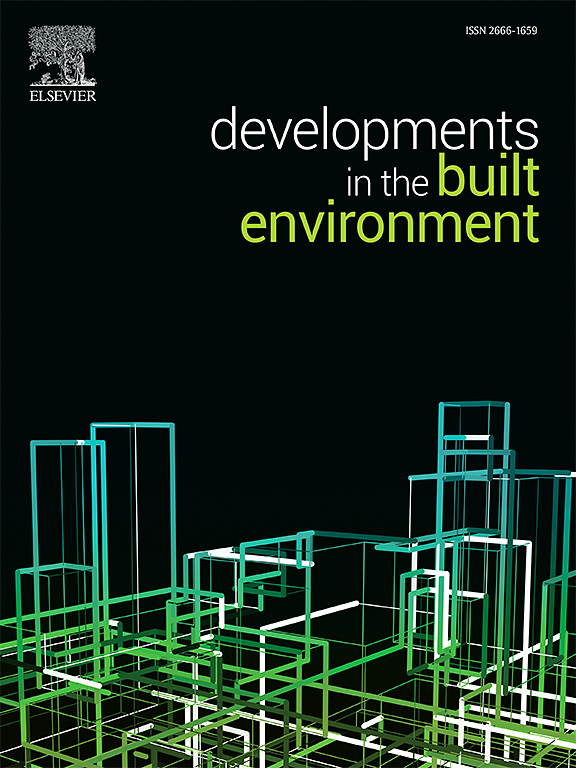对美国洪水预警传感器网络运行和维护实践的调查
IF 6.2
2区 工程技术
Q1 CONSTRUCTION & BUILDING TECHNOLOGY
引用次数: 0
摘要
社区使用洪水传感器网络来减轻洪水风险,加强排水基础设施,并减少相关的死亡人数。本研究探讨了四个主要研究问题,旨在提高政府实体管理的洪水传感器网络运营的理解和有效性。具体来说,它解决了:(i)这些组织在管理和维护这些网络方面面临的关键挑战,(ii)各种通信协议对网络性能和可靠性的影响,(iii)洪水传感器网络数据指导基础设施改善项目的方式,以及(iv)不同类型政府组织的洪水传感器网络运营规模的变化。我们通过微软团队在美国采访了18家拥有和运营洪水传感器网络的政府机构,以了解他们的日常运作情况。这些机构以等级结构运作,可分为职能型和司型。影响洪水传感器网络运行的因素主要有组织结构、设备、数据存储与管理、人员、运行规模、资金等。实时监测和资本改善项目是传感器数据的主要用途。在受访者中,53%的机构积极通过各种媒体发布当地预警,37%的机构在洪水应急行动期间提供决策方面的技术专长。传感器数据的多功能性在洪水预报(32%)、交通操作(32%)和大坝操作(26%)中的应用突出。与大多数工程操作一样,充足的资金和维护是可持续发展的必要条件。数据表明,传感器维修是由机构雇员或聘请的顾问/承包商进行的。雇佣员工的机构记录的每月旅行里程在75到1700英里之间,中位数为300英里。年运营成本在55,000美元到150万美元之间,年维护成本在25,000美元到60.2万美元之间。这些传感器运营的资金来源多种多样,包括税收、服务费、债券和赠款。该研究为洪水监测和管理提供了有价值的见解,对优化洪水传感器网络的有效性和可靠性具有重要意义。本文章由计算机程序翻译,如有差异,请以英文原文为准。
A survey of flood warning sensor network operational and maintenance practices across the United States
Communities employ flood sensor networks to mitigate flood risks, enhance drainage infrastructure, and reduce associated fatalities. This study explores four primary research questions aimed at improving the understanding and effectiveness of flood sensor network operations managed by government entities. Specifically, it addresses: (i) the critical challenges these organizations face in managing and maintaining these networks, (ii) the impact of various communication protocols on network performance and reliability, (iii) the ways in which data from flood sensor networks can guide infrastructure improvement projects, and (iv) the variation in operational scale of flood sensor networks across different types of government organizations. We interviewed 18 government agencies via Microsoft Teams in the United States that own and operate flood sensor networks to gain insights into their daily operations. These agencies operate in a hierarchical structure, which can be categorized as functional or divisional. The factors influencing the operation of flood sensor networks emerged as organizational structure, equipment, data storage and management, personnel, scale of operation, and funding. Real-time monitoring and capital improvement projects were the predominant uses of sensor data. Amongst the interviewees, 53 % of the agencies actively issue local warnings through diverse media, 37 % provide technical expertise in decision-making during flood emergency operations. The versatility of sensor data is highlighted by its application in flood forecasting (32 %), traffic operations (32 %), and dam operations (26 %). As with most engineering operations, adequate funding and maintenance are necessary for sustainability. Data indicated that the sensor maintenance was performed by agency employees or hired consultants/contractors. Agencies using employees recorded monthly travel ranging between 75 and 1700 miles, with a median of 300 miles. Annual operational costs ranged between $55,000 to $1.5M USD, and annual maintenance costs between $25,000 to $602,000 USD. These sensor operations are funded from diverse sources, including taxes, service fees, bonds, and grants. This research, with its valuable insights into flood monitoring and management, plays a crucial role in informing future strategies for optimizing the effectiveness and reliability of flood sensor networks.
求助全文
通过发布文献求助,成功后即可免费获取论文全文。
去求助
来源期刊

Developments in the Built Environment
Multiple-
CiteScore
7.40
自引率
1.20%
发文量
31
审稿时长
22 days
期刊介绍:
Developments in the Built Environment (DIBE) is a recently established peer-reviewed gold open access journal, ensuring that all accepted articles are permanently and freely accessible. Focused on civil engineering and the built environment, DIBE publishes original papers and short communications. Encompassing topics such as construction materials and building sustainability, the journal adopts a holistic approach with the aim of benefiting the community.
 求助内容:
求助内容: 应助结果提醒方式:
应助结果提醒方式:


